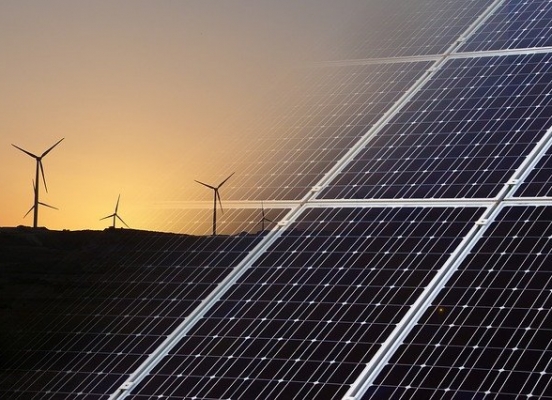HAL: India’s First Tracker-Based Solar Plant at an Airport
Overview
Hindustan Aeronautics Limited is the Indian state-owned aerospace and reputed defense company headquartered in Bengaluru, which is the preferred destination for general and business aviation and utilized as a testing facility by Indian Armed Forces. Also, the Tejas, India’s Light Combat Aircraft, is being manufactured at this facility.
HAL as a responsible PSU has undertaken a green initiative and partnered with Amplus to solarize its facility and thereby reduce the impact of its operation on the environment.
Amplus has signed a Power Purchase Agreement (PPA) with HAL for 25 years wherein Amplus has designed, built, and is operating and maintaining the plant. The power plant at HAL has a single-axis tracking mechanism Hindustan Aeronautics Limited, is the Indian state-owned aerospace and reputed defense company headquartered in Bengaluru, which is the preferred destination for general and business aviation and utilized as a testing facility by Indian Armed Forces. Also, the Tejas, India’s Light Combat Aircraft, is being manufactured at this facility.
HAL as a responsible PSU has undertaken a green initiative and partnered with Amplus to solarize its facility and thereby reduce the impact of its operation on the environment. Amplus has signed which enhances the power generation and avoids glare for the landing aircraft. The solar plant is a unique 3.9 MW ground-mounted installation at this airport and is the first single-axis tracker based solar plant at an airport in India. The plant got commissioned on September 7th, 2016, and has been operating successfully.
Unique Facts Of The Project
HAL is one of a kind project by Amplus as it has answered the challenges in construction, design, and many more aspects in a unique way. The team identified a few key challenges during its site visit to the client location. After assessing the site with the technical team and taking in account the area capacity and other parameters, following were the obstacles identified by the team:
Location-specific challenges:
Since it’s a defense airport, a lot of permissions were required, slowing down the pace of construction.
Stringent rules like “fixed working times” and the “prohibiting of fieldwork during the arrival of guest aircrafts” made the execution a tedious task.
Design-specific challenges:
Due to the high reflection surface of the modules, a glaring effect was being created for the aircraft flying above the airport. Also, due to the proximity of the plant to the runway, ensuring smooth landing and take-off was considered a major challenge for the pilots.
Construction-specific challenges:
For a ground mount project, the site was uneven with slopes and undulations. This made the installation of a single tracker-based system difficult. Certain pockets at the construction site were more challenging than the rest due to landfills and underground utilities.
Mitigation:
To circumvent the effect of glare reflections on the incoming aircraft and ATC tires, Amplus partnered with Harris Miller Miller and Hanson Inc. (HMMH) to perform an extensive glare analysis.
A single-axis tracker was installed with some inclination after a thorough analysis of mounting structures. This helped in evading a significant chunk of excavation costs. This also helped in shortening the project span. Despite many permission related challenges, the Amplus project team was able to deliver and commission the project within 6 months.
The key benefits derived out of the solar plant installed are:
- The expected solar power generation is 60 lakh units (kWh) annually and 1731 lakh units (kWh) over its lifetime of 25 years.
- Through the plant installed, HAL meets 7% of its total electricity requirements and thus has been able to reduce the impact of its operation on the environment.
Here are some of the environmental savings that are derived through the solar initiative:
- Green electricity production 173,091,982 kWh over the system’s lifetime. It is equivalent to 58,676 urban household’s annual electricity consumption in India over the system’s lifetime which can in-turn be equated to 9,119,704 LED lights bulbs shining for one year and 45,164,248 I-phone charging for one year.
- 38,464,885 liters of water saved by avoiding the consumption of coal-fired electricity.
- Avoided carbon footprints Co2 11,390 metric tonnes which are equivalent to planting 4,315,413 tree seedlings grown for 10 years.
(Figures above are Environmental Savings calculated for the installed capacity over the lifetime of the plant.)
To know more, please check Amplus Solar.

